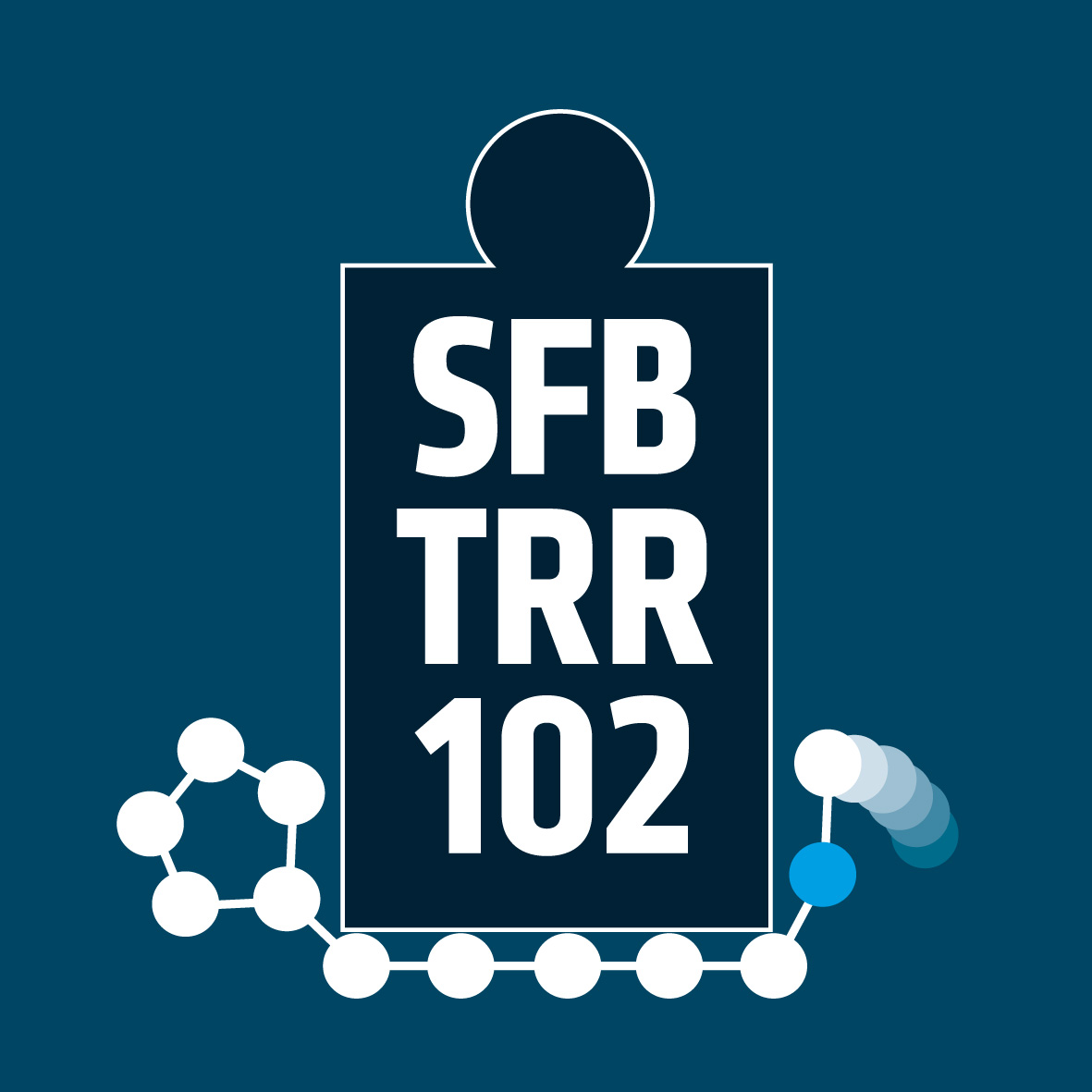On the track of misfolded proteins
Structure formation: Is the aggregation associated with an internal reorganization?
Proteins, essential components of every living being, have been posing riddles to researchers worldwide for decades. The function of these long-chain biomolecules is determined by the spatial configuration. Strictly speaking a protein folds into a specific three-dimensional structure. Properly folded, the protein can fulfill the specific biological function in our body, e.g., the control of cell growth.
However, if anything is wrong with the folding - known as the misfolding of proteins - toxic substances can arise that might lead to diseases such as Alzheimer's disease and diabetes. Through intermediate stages, a gradual aggregation of misfolded proteins results in the so-called mature fibrils. This final stage possesses the form of elongated rods which are composed of helically wound, zipper-like interconnected strips.
Holger Scheidt, from the group of Daniel Huster at University of Leipzig, and his colleagues have now succeeded in finding a greater similarity of the internal three-dimensional structure of the two intermediates for the first time. Mature fibrils, however, show an altered spatial arrangement [Scheidt2012]. In detail, the protein amyloid-beta (1-40) was examined by using high-resolution nuclear magnetic resonance (NMR) spectroscopy within the CRC project A06.
![Schematic depiction of the formation process of a mature fibril. The individual proteins are characterized by the major structural elements, the beta-strands (gray arrows), and the side chains (orange and yellow spheres). A structural rearrangement is visible by the rotation of the beta strands (adapted from [Sandberg2010]).](/im/1382948551_879_00_420.png)
Schematic depiction of the formation process of a mature fibril. The individual proteins are characterized by the major structural elements, the beta-strands (gray arrows), and the side chains (orange and yellow spheres). A structural rearrangement is visible by the rotation of the beta strands (adapted from [Sandberg2010]).
The results support a recently proposed model for fibril formation, which predicts a major structural rearrangement only in the transition from the last precursor (protofibril) to the mature fibrils [Sandberg2010].
Step by step to mature fibril aggregation
Surprisingly, fibrils with very similar structure are formed from a variety of proteins. Irrespective of their composition, given by the sequence of amino acids, the proteins can form both, a stable functional and a toxic form. The latter aggregates and forms the various precursors of the mature fibril. These precursors differ in the (secondary) structures within the protein, its spatial relationship to each other and their interaction with each other.
The path from the single misfolded protein to eventually mature fibrils has been discussed controversially for years. In a first step, the resulting aggregates are referred to as oligomers. With continued growth so-called protofibrils form, which already exhibit greater similarities in the outer shape with mature fibrils. However, the internal structure and the arrangement of structural elements have more in common with oligomers. Up to now, little was known of the three-dimensional structure, especially of the last precursor the protofibrils, investigated by H. Scheidt.
Distance measurements by means of NMR
The structural arrangement in the protofibril has been investigated by an NMR distance measurement. The experiments were carried out with the aid of 13C-labeled amino acids. Thereby the similarity in the three-dimensional internal structure between protofibrils with the previous stage, the oligomers, could be demonstrated for the first time.
![Schematic depiction of the different structures of a misfolded protein as part of
an oligomer and a mature fibril. The side chains under investigation are shown
as yellow spheres. These have a smaller distance from one another in the
oligomer, as compared to the mature fibril. Key structural elements (beta
strands) are indicated by grey arrows (adapted from [Scheidt2012]).](/im/1382948886_879_00_420.png)
Schematic depiction of the different structures of a misfolded protein as part of
an oligomer and a mature fibril. The side chains under investigation are shown
as yellow spheres. These have a smaller distance from one another in the
oligomer, as compared to the mature fibril. Key structural elements (beta
strands) are indicated by grey arrows (adapted from [Scheidt2012]).
NMR signals of adjacent side chains of marked amino acids (Glu-22 and Ile-31) were found only in protofibrils and not in mature fibrils. With the help of the observed correlations a short distance (6-7 Angström) has been found. In previous studies of oligomers a similar small distances has been detected.
Structural rearrangement at the very end
The similarities in the three-dimensional structure of the intermediate forms of mature fibrils suggests a major internal structural rearrangement in the transition from the protofibril, the last precursor, to the mature fibril. Thus, the NMR studies of Scheidt and colleagues support a current model of structure formation of mature amyloid-beta fibrils by [Sandberg2010].
The results have been published in the Journal of Biological Chemistry .
About the author
Thomas Michael is research coordinator at the SFB/TRR 102.
Please find the pdf version of the text here.
misfolded_protein_2012.pdf
(91.4 KB) vom 29.10.2013
Recommended literature
|
[Scheidt2012] |
H. A. Scheidt, I. Morgado, and D. Huster. Solid-state NMR Reveals a Close Structural Relationship between Amyloid- β Protofibrils and Oligomers. J. Biol. Chem. vol. 287, pp. 22822- 22826 (2012) |
|
[Tycko2006] |
R. Tycko. Molecular structure of amyloid fibrils: insights from solid-state NMR. Quart. Rev. Biophys. vol. 39, pp. 1 (2006) |
|
[Sandberg2010] |
A. Sandberg,L. M. Luheshi, S. Söllvander et al. Stabilization of neurotoxic Alzheimer amyloid-β oligomers by protein engineering. Proc. Natl. Acad. Sci U.S.A. vol. 107, pp. 15595- 15600 (2010) |
|
[Dobson2003] |
C. Dobson. Protein folding and misfolding. Nature vol. 426, pp. 884-890 (2003) |
|
[Meinhardt2009] |
J. Meinhardt and M. Fändrich. Struktur von Amyloidfibrillen. Pathologe vol. 30, pp. 175-181 (2009) |
|
[Saalwächter2010] |
K. Saalwächter and D. Reichert: Magnetic Resonance: Polymer Applications of NMR. In: Encyclopedia of Spectroscopy & Spectrometry, 2nd edition, vol. 3, pp. 2221-2236. Editors: J. Lindon, G. Tranter, D. Koppenaal. Elsevier, Oxford 2010. |





